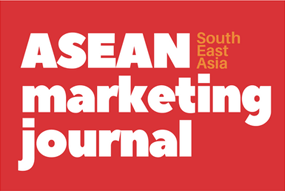
Abstract
Currently cosmetic products are no longer only intended for women, but also for men. Thus, creating opportunities and a conducive environment for the emergence of new companies. With the increasing number of companies in the men's cosmetic industry today, how to build brand loyalty is one of the biggest challenges companies will face. This study aims to explore the relationship between risk aversion and brand loyalty, and test whether this relationship is mediated by brand trust and brand affect on the purchase of cosmetic and body care products by men. The selection of the sample was carried out using a purposive sampling method with 130 respondents whose criteria were male students at Ciputra University Surabaya. Data analysis used the SEM-PLS variant-based structural equation method with the SmartPLS 4 program. The results showed that risk aversion was statistically significant in influencing brand trust, brand affect, and brand loyalty. Brand trust and brand affect are also statistically significant in influencing brand loyalty. By analyzing brand loyalty and the variables that influence it, cosmetic and men's body care product companies can understand how to develop brand loyalty, especially by paying attention to the aspects of risk aversion, brand trust, brand affect, and brand loyalty.
Bahasa Abstract
Saat ini produk kosmetik tidak lagi hanya diperuntukkan bagi wanita, tetapi juga untuk pria. Sehingga menciptakan peluang dan lingkungan yang kondusif bagi munculnya perusahaan baru. Dengan semakin banyaknya perusahaan di industri kosmetik pria saat ini, bagaimana membangun brand loyalty adalah salah satu tantangan terbesar yang akan dihadapi perusahaan. Penelitian ini bertujuan untuk mengeksplorasi hubungan antara risk aversion dan brand loyalty, dan menguji apakah hubungan ini dimediasi oleh brand trust dan brand affect pada pembelian produk kosmetik dan perawatan tubuh oleh pria. Pemilihan sample dilakukan dengan metode purposive sampling dengan 130 responden yang berkriteria sebagai mahasiswa Universitas Ciputra Surabaya dengan jenis kelamin laki-laki. Analisis data menggunakan metode persamaan structural berbasis varian SEM-PLS dengan program SmartPLS 4. Hasil penelitian menunjukkan bahwa risk aversion secara statistik signifikan dalam mempengaruhi brand trust, brand affect, dan brand loyalty. Brand trust dan brand affect juga secara statistik signifikan dalam mempengaruhi brand loyalty. Dengan menganalisis brand loyalty dan variabel yang mempengaruhinya, perusahaan produk kosmetik dan perawatan tubuh pria dapat memahami cara mengembangkan brand loyalty, terutama dengan memperhatikan aspek risk aversion, brand trust, brand affect, dan brand loyalty.
References
Agusty, L. E., & Muttaqin, A. A. (2022). Analisis Pengaruh Label Halal, Kesadaran Halal, Dan Persepsi Atas Produk Halal Dalam Pembelian Kosmetik Halal. https://doi.org/10.21776/ieff.2022.01.4.08
Akoglu, H. E., & Özbek, O. (2022). The effect of brand experiences on brand loyalty through perceived quality and brand trust: a study on sports consumers. Asia Pacific Journal of Marketing and Logistics, 34(10), 2130–2148. https://doi.org/10.1108/APJML-05-2021-0333
Alhosseini Almodarresi, S. M., & Rasty, F. (2019). The moderating effect of emotion regulation on the relationship between risk aversion and brand sensitivity. Journal of Product and Brand Management, 28(1), 95–103. https://doi.org/10.1108/JPBM-09-2017-1581
Aren, S., & Nayman Hamamci, H. (2020). Relationship between risk aversion, risky investment intention, investment choices: Impact of personality traits and emotion. Kybernetes, 49(11), 2651–2682. https://doi.org/10.1108/K-07-2019-0455
Ashaduzzaman, M., Jebarajakirthy, C., Weaven, S. K., Maseeh, H. I., Das, M., & Pentecost, R. (2022). Predicting collaborative consumption behaviour: a meta-analytic path analysis on the theory of planned behaviour. In European Journal of Marketing (Vol. 56, Issue 4, pp. 968–1013). Emerald Group Holdings Ltd. https://doi.org/10.1108/EJM-07-2020-0563
Chubukova, O., Kostynets, I., Ponomarenko, I., Rallie, N., & Zymbalevska, Y. (2019). Factor model of social media marketing effect on brand loyalty. SHS Web of Conferences, 65, 04011. https://doi.org/10.1051/shsconf/20196504011
Gültekin, B., & Kiliç, S. I. (2022). Repurchasing an Environmental Related Crisis Experienced Automobile Brand: An Examination in the Context of Environmental Consciousness, Brand Trust, Brand Affect, and Resistance to Negative Information. Sosyoekonomi. https://doi.org/10.17233/sosyoekonomi.2022.01.12
Hair, J. F., Black, W. C., Babin, B. J., & Anderson, R. E. (2019). Multivariate Data Analysis Eight Edition.
Haq, M. I. U., Khaliq Alvi, A., Somroo, M. A., Akhtar, N., & Ahmed, A. (2022). Relationship of brand credibility and brand loyalty: the mediating effects of attitude toward brand. Journal of Economic and Administrative Sciences. https://doi.org/10.1108/jeas-08-2021-0142
Hardani, H., & Fardani, R. (2020). Buku Metode Penelitian Kualitatif & Kuantitatif. https://www.researchgate.net/publication/340021548
Huaman-Ramirez, R., Albert, N., & Merunka, D. (2019). Are global brands trustworthy?: The role of brand affect, brand innovativeness, and consumer ethnocentrism. European Business Review, 31(6), 926–946. https://doi.org/10.1108/EBR-11-2017-0202
Matzler, K., Grabner-Kräuter, S., & Bidmon, S. (2008). Risk aversion and brand loyalty: The mediating role of brand trust and brand affect. Journal of Product and Brand Management, 17(3), 154–162. https://doi.org/10.1108/10610420810875070
Mishra, M. K., Kesharwani, A., & Das, D. (2016). The relationship between risk aversion, brand trust, brand affect and loyalty: Evidence from the FMCG industry. Journal of Indian Business Research, 8(2). https://doi.org/10.1108/JIBR-04-2015-0045
Nguyen, D. T., Le, D. H. A., Truong, L. G., Truong, N. G., & Vu, V. V. (2022). The effect of Generation Z’s perceptions of brand activism on brand loyalty: evidence from Vietnam. Asia Pacific Journal of Marketing and Logistics. https://doi.org/10.1108/APJML-02-2022-0165
Raju, P. S. (1980). Optimum Stimulation Level: Its Relationship to Personality, Demographics, and Exploratory Behavior.
Rostami, M., Pour, H. F., & Saboonchi, R. (2019). The Causal Model of Brand Personality, Risk Aversion and Customer Loyalty. In Journal of System Management (Vol. 3).
Samarah, T., Bayram, P., Aljuhmani, H. Y., & Elrehail, H. (2022). The role of brand interactivity and involvement in driving social media consumer brand engagement and brand loyalty: the mediating effect of brand trust. Journal of Research in Interactive Marketing, 16(4), 648–664. https://doi.org/10.1108/JRIM-03-2021-0072
Sjabadhyni, B., Mustika, M. D., Pane, K. A., Kaur, D., & Eryandra, A. (2019). Does Experience Lead People to Buy? The Formation of Brand Loyalty Using the Theory of Love on Older Consumers. Humaniora, 10(2), 153. https://doi.org/10.21512/humaniora.v10i2.5576
Recommended Citation
Wicaksono, Nurfuad
(2023)
"The Influence of Risk Aversion on Brand Loyalty with Brand Trust and Brand Affect as Mediating Variables,"
ASEAN Marketing Journal: Vol. 15:
No.
2, Article 5.
DOI: 10.7454/amj.v15i1.1188
Available at:
https://scholarhub.ui.ac.id/amj/vol15/iss2/5





